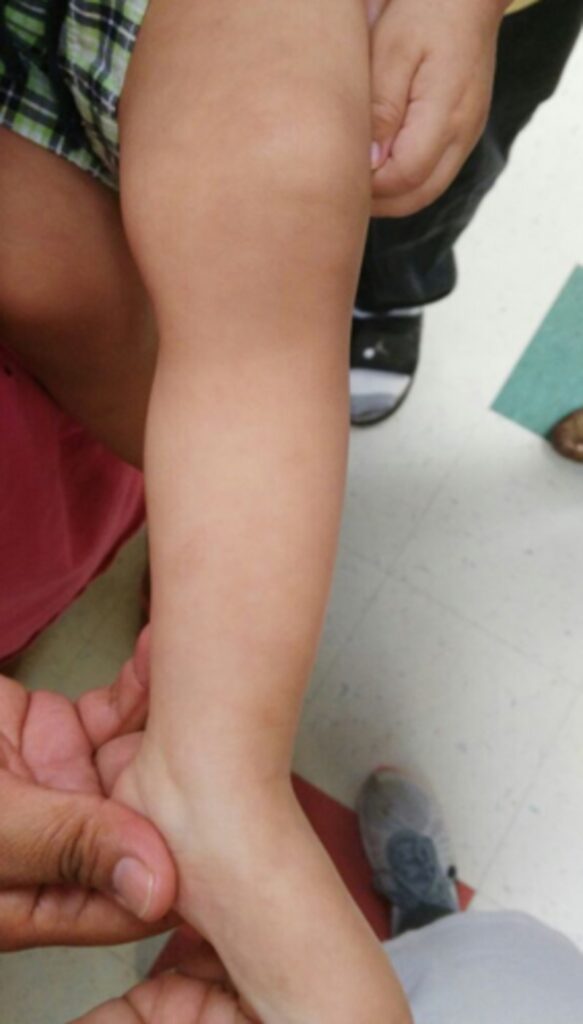A 14-month-old boy went to a park in the summers where a caterpillar gave him a rash!
Parents brought a 14-month-old baby boy to the outpatient paediatric clinic with complaints of a unilateral red rash on the left leg for the past 2 hours. Upon asking about the preceding events, the parents revealed that they were sitting in the park when he suddenly started to cry. Right at that moment, they saw an insect crawling on his legs. Moreover, they caught the onset and brought it to the clinic to show it to the paediatrician. The insect that the parents had brought in to show the doctor was a “Puss Caterpillar.”
The parents were concerned as the rash was gradually increasing in size and spreading.
His immunizations were UpToDate, had no drug allergies, nor had any medical disease.
On examination, the child was well appearing and he was not in distress. However, on general inspection, the baby’s anterior aspect of the left lower extremity had a unilateral rash stretched from the distal thigh to the shin. His body temperature was 37.6 °C. Lungs were clear on auscultation with no wheezing or rhonchi. The rest of the examination was also normal.
However, on local examination of the left leg, the paediatrician noticed a blanching red rash in discrete patches and plaques. There was no tenderness or warmth on palpation. There were no visible spines or setae in the patient’s skin.

Therefore, on the basis of the examination, history, and clinical presentation, the paediatrician made a working diagnosis of contact dermatitis caused by a caterpillar, or Caterpillar dermatitis, or lepidopterism.
The doctor prescribed an antihistamine: loratadine 5 mg daily for 5 days. Moreover, the doctor advised the parents to bathe the affected area with water and baking soda. Additionally, the doctor advised them to monitor the child for any red flags and return to the clinic once the child completes the medications.
At the 4-day-followup, the rash had completely resolved therefore, the doctors stopped the medications.

Contact with butterflies, moths and their caterpillars causes Lepidopterism. Usually, there is a typical history of being in the farms, gardens, parks, woods, or outdoor. Also, the children may pick up caterpillars due to their fluffy appearance. Incidences increase in summers because, firstly, people tend to go out more often in the summer seasons and also the number of caterpillars increases in summers due to their breeding season.
The condition is self-limited, so the management is supportive only. It is imperative to remove any spines of the caterpillar from the skin. NSAIDs are usually ineffective. Second generation antihistamines relieve pruritis. Bathing with baking soda helps against inflammation and burning.
In a nutshell, caterpillar dermatitis, though less common, should be one of the differentials; especially when there is a relevant history in the summer months. Moreover, it is imperative to educate the parents to watch for the potential complications (anaphylaxis and systemic signs) of the reaction and to monitor the rash while it is managed.
References:
Müller CS, Tilgen W, Pföhler C. Caterpillar dermatitis revisited: lepidopterism after contact with oak processionary caterpillar. BMJ Case Rep. 2011;2011:bcr0320113967. Published 2011 Apr 19. doi:10.1136/bcr.03.2011.3967
Konstat-Korzenny E, Yudovich A, Morgenstern-Kaplan D. Lepidopterism: Case Report and Review of the Literature. Cureus. 2020;12(1):e6567. Published 2020 Jan 5. doi:10.7759/cureus.6567




